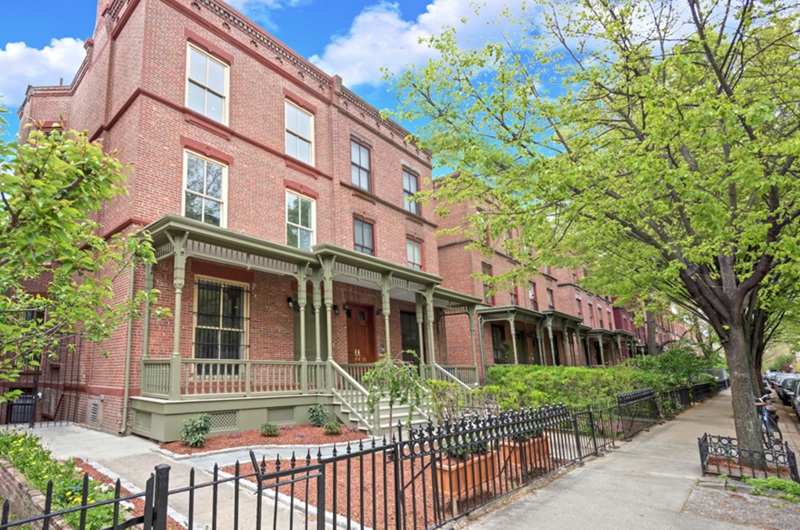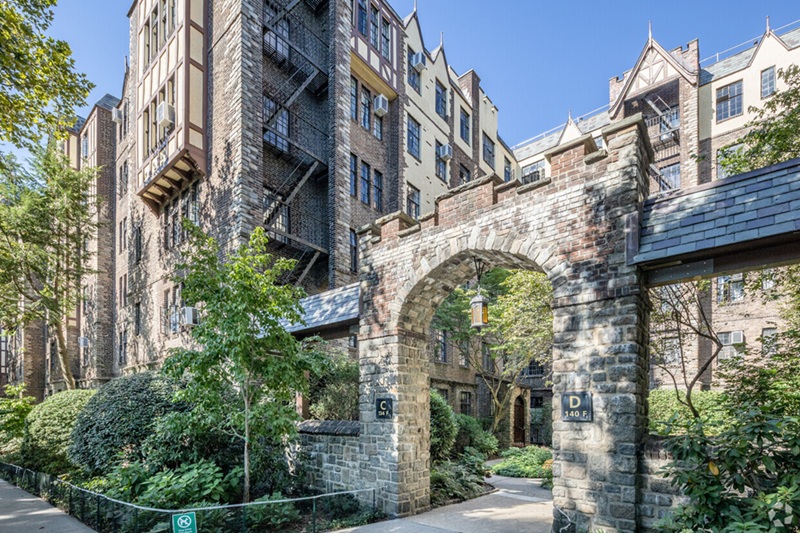
Located just west of Times Square and the Theater District, Hell’s Kitchen is a vibrant, evolving neighborhood in Midtown Manhattan that has long been known for its gritty history, thriving arts scene, and diverse community. Over the past few decades, Hell’s Kitchen has undergone a significant transformation, shifting from a working-class, industrial area to a sought-after, trendy residential neighborhood with a rich mix of cultures, dining, and entertainment. Today, it is one of the most exciting places to live, work, and explore in Manhattan.
A Brief History of Hell’s Kitchen
Hell’s Kitchen, also known as Clinton, has a history that reflects the broader story of New York City’s development. The neighborhood’s name has long been associated with rough living conditions, poverty, and crime. It is said that the term “Hell’s Kitchen” originated in the late 19th century when the area was populated by working-class immigrants, particularly Irish and Italian families. The neighborhood became notorious for its crowded tenements, dilapidated buildings, and gang violence. According to local legend, a police officer in the 1880s described the area as “hell’s kitchen,” referring to its dangerous reputation.
The neighborhood’s close proximity to the docks, particularly around the Hudson Yards, made it an industrial hub, with factories, warehouses, and shipping yards lining the waterfront. However, as the city’s economy evolved in the 20th century, the industrial base of Hell’s Kitchen began to decline, and the area became increasingly associated with crime, especially during the mid-1900s.
In the 1980s and 1990s, however, the neighborhood began to gentrify as new residents moved in, attracted by its central location, relative affordability compared to other Manhattan neighborhoods, and potential for revitalization. Over time, Hell’s Kitchen shed much of its rough exterior and became an attractive destination for young professionals, artists, and families looking for a more affordable place to live in Midtown.
The Transformation of Hell’s Kitchen
The last few decades have seen dramatic changes in Hell’s Kitchen. The area’s proximity to Broadway, the Theater District, and the Hudson Yards development project have made it a highly desirable location for residents and businesses alike. Real estate development has boomed, and new high-rise apartments, luxury condos, and trendy restaurants have sprouted up, attracting a more upscale crowd.
One of the neighborhood’s key transformations has been the influx of restaurants and bars. Hell’s Kitchen is now known as a culinary hotspot with a wide range of eateries serving everything from classic American comfort food to international cuisine, including Thai, Indian, French, and Latin American. The area has become a foodie paradise, drawing both locals and tourists seeking new and exciting dining experiences. Many of the neighborhood’s restaurants offer cozy atmospheres and a neighborhood feel, making it a favorite destination for dining out, whether for a casual bite or a special night out.
Hell’s Kitchen has also embraced its artistic roots, with galleries and theaters continuing to pop up throughout the area. The neighborhood has long been home to theater professionals and performers, given its proximity to Broadway and off-Broadway theaters. In fact, the area is often associated with the energy and creativity that drives New York’s theater scene, and it continues to be a haven for artists, performers, and designers.
Hell’s Kitchen: A Cultural Melting Pot
One of the defining characteristics of Hell’s Kitchen is its diverse population. The neighborhood has always attracted a range of immigrants and has had a strong Irish, Italian, and later, Latino presence. Today, Hell’s Kitchen is home to a mix of cultures, making it an exciting and dynamic neighborhood where residents and visitors can enjoy a wide array of cultural experiences, from food to festivals.
The diversity of Hell’s Kitchen is particularly reflected in its vibrant food scene. A stroll down 9th Avenue, one of the neighborhood’s main thoroughfares, reveals an eclectic range of dining options, including traditional Irish pubs, Mexican taquerias, and upscale Italian trattorias. In addition to the restaurants, Hell’s Kitchen is also known for its farmers’ markets and local food events, which bring together a blend of international flavors and local ingredients.
The neighborhood’s cultural richness also extends beyond food. Hell’s Kitchen hosts a variety of annual cultural festivals and events, such as the Hell’s Kitchen Flea Market and Broadway Week, which draw crowds from across the city. This lively mix of entertainment, art, and celebration makes the area an exciting place to visit year-round.
Living in Hell’s Kitchen
In terms of real estate, Hell’s Kitchen has become one of Manhattan’s most desirable places to live. The neighborhood offers a wide range of housing options, from historic brownstones to modern high-rise condos, catering to a diverse mix of residents. While the neighborhood has become more upscale in recent years, it retains much of its gritty charm, with older buildings and narrow streets adding to its distinct character.
Hell’s Kitchen’s central location makes it an ideal place to live for those working in Midtown, Times Square, and the Financial District, with easy access to public transportation, including subway lines and bus routes. Its proximity to Central Park also adds to its appeal, providing residents with easy access to green space for outdoor activities and relaxation.
As a result of its popularity, Hell’s Kitchen has become a sought-after neighborhood for both newcomers to the city and long-time residents who appreciate its mix of accessibility, affordability, and urban convenience. Many young professionals, artists, and families are drawn to the area for its proximity to cultural landmarks, as well as its growing number of amenities and services, from grocery stores and gyms to cafes and salons.
Hell’s Kitchen Nightlife
Hell’s Kitchen is known for its dynamic and diverse nightlife scene. After the sun sets, the neighborhood comes alive with bars, lounges, and clubs catering to a variety of tastes and styles. Whether you’re in the mood for a relaxed cocktail in a cozy bar, a night of dancing, or a fun evening with friends at a laid-back pub, Hell’s Kitchen has something to offer.
One of the neighborhood’s highlights is its vibrant gay nightlife scene, centered around a number of popular LGBTQ+ bars, clubs, and event spaces. These venues have been an integral part of Hell’s Kitchen’s identity for decades, and the area is known for being inclusive and welcoming to people from all walks of life.
Additionally, the Theater District is just a few blocks away, meaning that Hell’s Kitchen is also home to Broadway pre-show and post-show gatherings, with many theaters and restaurants offering special deals for theatergoers.
Hell’s Kitchen Today
Today, Hell’s Kitchen is a thriving, multifaceted neighborhood where new meets old, and grit meets glamour. It continues to evolve, with new developments complementing the neighborhood’s rich history. While the streets are lined with trendy restaurants, bars, and cafes, the neighborhood has retained a sense of authenticity and local charm, with longtime residents and newer arrivals coexisting in a vibrant and welcoming environment.
The area is known for its creative energy, rich cultural diversity, and vibrant nightlife, making it a perfect microcosm of New York City‘s spirit. Whether you’re a resident, a visitor, or just passing through, Hell’s Kitchen offers a uniquely New York experience—a neighborhood that is both edgy and sophisticated, casual yet chic, and constantly buzzing with life.
Hell’s Kitchen is one of the most exciting and rapidly evolving neighborhoods in Manhattan. From its historical roots as a working-class area to its current status as a trendy and diverse urban hub, Hell’s Kitchen offers a dynamic mix of culture, food, entertainment, and history. Whether you are drawn to its bustling streets, its rich theater scene, or its cozy local spots, Hell’s Kitchen offers a truly authentic New York experience. It is a neighborhood that continues to thrive and evolve, making it an essential part of Manhattan’s ever-changing landscape.

